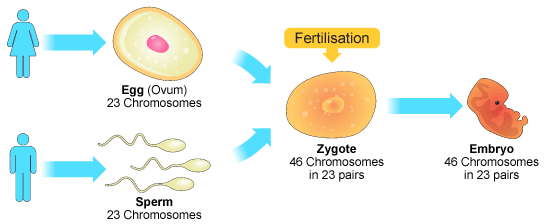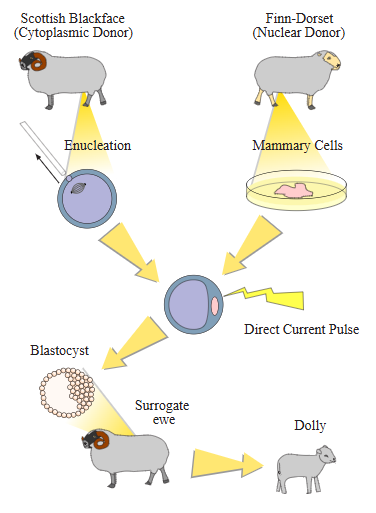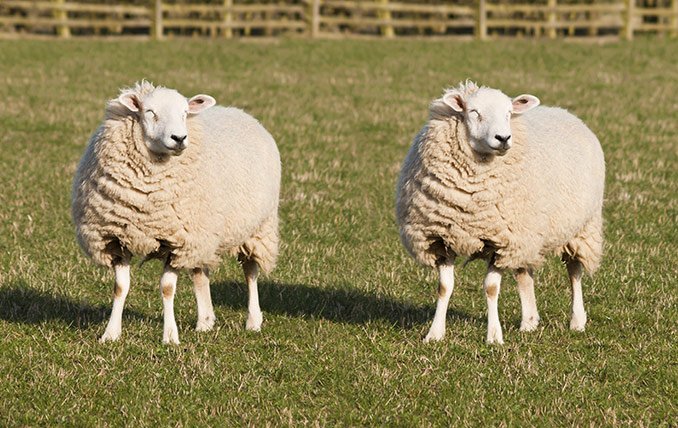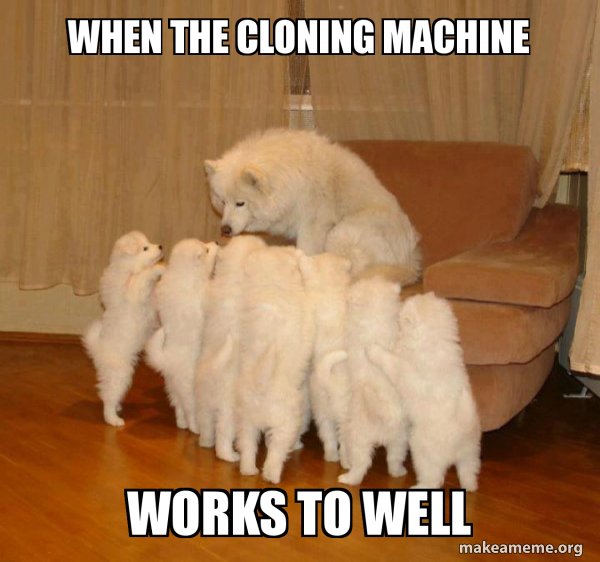Have you ever loved a pet so much you wish you could have them for round 2? Or just wished for a clone to do all the things you don’t want to? Let’s learn about the scientific reality of cloning to see if those dreams can come true!
We need to back up a little bit to make sure we understand some terms:
This whole lesson is based on the prior knowledge that:
- All living things are made of CELLS.
- Each cell has a full set of DNA instructions that instruct the growth, development and function of an organism.
- Plants and animals reproduce sexually when the half set of DNA from a father carried by a sperm join the half set of DNA from a mother contained in an egg.
- This first cell of an organism is called a zygote and grows by copying and dividing itself millions of times.
Are you still with me? Good, let’s move to the interesting stuff!

How does Cloning work?
- Since we’re trying to copy an individual, we’ll need an entire copy of their DNA from one of their body cells.
- Then we need an empty egg from a female of the species.
- The full set of DNA from the donor parent is placed into the egg, then electrically shocked to stimulate growth.
- The zygote is then placed into the uterus of any female of the species to grow for the typical gestation period and birth through typical processes.
- The clone will grow and develop along all timelines typical for their species.

How do Clones compare to their DNA donor parents?
Because they share 100% of their DNA, all genetic traits will be the same. This includes physical characteristics like eye color and skin tone and genetic diseases. But because they often grow in very different times and circumstances, environmentally acquired characteristics like scars and interests often differ. Traits that are influenced by both genetics and environment like personality and sense of humor are likely to differ as well.
So what are the potential positive uses of Cloning?
As with every lesson this story, we always come back to food. Typical cows make 17,000lbs of milk each year and a typical corn stock makes one ear of corn. Instead of using the long process of artificial selection to get plants and animals that yield more food, we can just clone cows that make 45,000lbs of milk and corn stocks that randomly grow 4 ears. Then less cows and corn fields would be required to feed everyone!

Cloning puts food on the table
Seeds are annoying to eat around, and with some plants like bananas, we’ve artificially selected them to create such small seeds that they’ve become useless. So now, all banana plants are clones created from cuttings of each other. This has the added benefit of ensuring all bananas taste the same! Other foods grown by cuttings include grapes, apples, potatoes and peaches.

Returning from Extinction
When a species is down to the final females, it’s considered functionally extinct. With cloning, we can potentially create offspring from small remaining populations. Scientists are even piecing together Tasmanian tiger and Mammoth DNA in hopes of bringing the animals back through cloning.
But it can’t be all good, right?
Problems with clones
After successfully cloning 11 species including sheep, rats, dogs, pigs and horses, some concerning patterns have emerged.
- Clones have shortened life spans
- The cloning process takes up to 100 tries to get one clone.
- Even full term clones often resemble premature births with incomplete system development and lifelong challenges.
- Due to diet and environment, clones rarely act and sometimes don’t even look the same as the DNA parent
Lack of Genetic Diversity
Remember those bananas? Problematically, the since the DNA in the field of clone plants is identical, they are all susceptible to the same diseases. So when a pest wipes out one, the others aren’t far behind. The identical Gros Michel crops were wiped out by the Panama Disease, and now the once immune Cavendish clone variety is being threatened by the ever evolving fungus.
Need pieces from several individuals to clone
How do we clone an extinct organism? First we need a full set of DNA, which is often fragmented due to decomposition and must be reconstructed like a puzzle. Then we need an functional egg, but those don’t exist in long dead animals. And who will be the surrogate mother? For a mammoth perhaps an elephant egg and mother would work, but unique animals like the Tasmanian Tiger would be more of a challenge.
Ethical, legal and moral issues of cloning
Every child needs a legal guardian, and the initial plan for all children are the two people who gave them their DNA. However, in the case of a clone, who is the parent? The DNA donor? The surrogate mother? The egg donor? Someone else?
What if someone just wants a clone to do their unwanted tasks or as backup organs (shoutout to The Island movie)? Can a clone be “owned” since it was created?
And then there is the question of DNA evidence in crimes! If you are known to have a clone, can DNA even be used as evidence in a case against either person?
So what do you think?
Should we use cloning technology? If so where do we draw the line?
Let’s Keep Learning!

